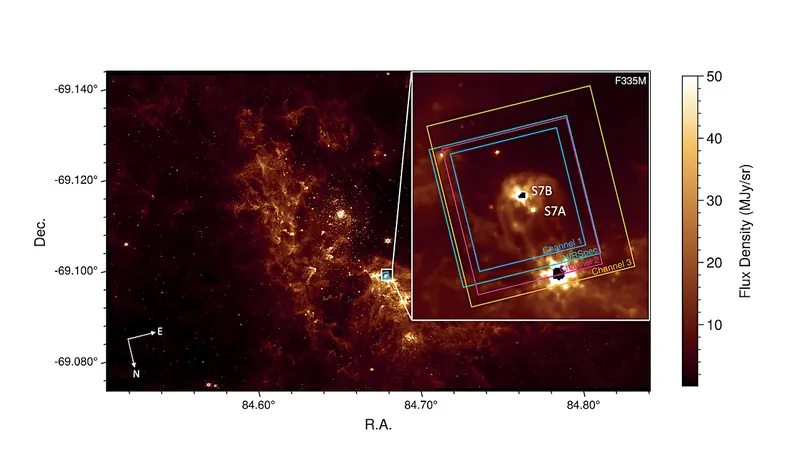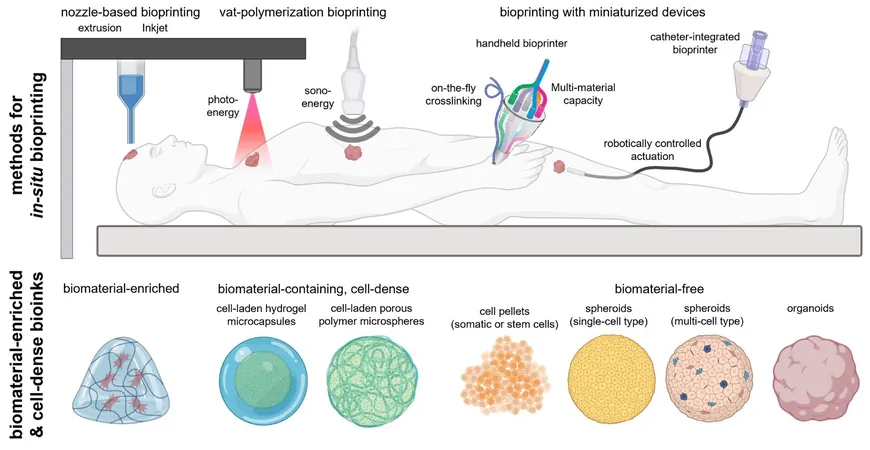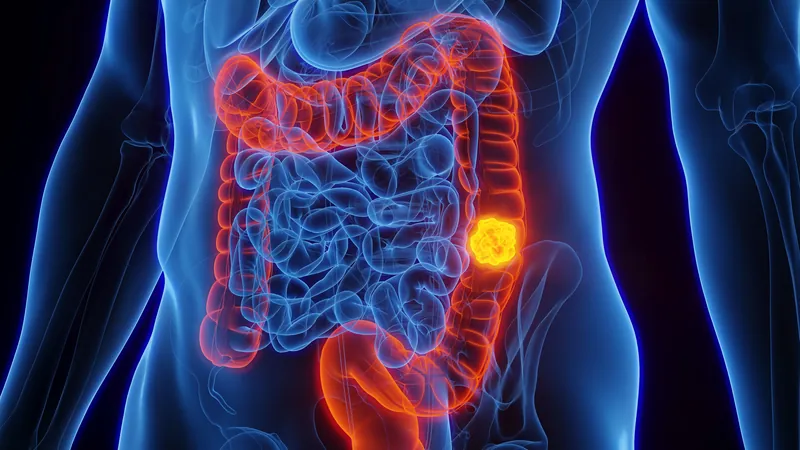
Unveiling the Secrets of Polycyclic Aromatic Hydrocarbon Emission in 30 Dor Using JWST
2024-10-29
Author: Mei
Introduction
In an exciting new study, researchers have unveiled critical insights into polycyclic aromatic hydrocarbons (PAHs)—complex organic molecules that are known to produce striking mid-infrared emission features in star-forming regions. While it's established that environments with low metallicity display diminished PAH emissions, the precise impact of metallicity on the properties of these emitting PAH populations has remained elusive until now.
Research Focus
This groundbreaking research focuses on the 30 Doradus region, located within the Large Magellanic Cloud (LMC), a celestial locale characterized by its low metallicity. By comparing the PAH emissions in this region to those found in the renowned Orion Bar, scientists have explored how varying environmental conditions influence the characteristics of PAH populations and the resultant infrared emissions.
Methodology
Utilizing the powerful James Webb Space Telescope (JWST), the team conducted a thorough analysis that includes both imaging and spectroscopy techniques. Specifically, they employed NIRCam and MIRI for imaging, alongside NIRSpec/IFU and MIRI/MRS for spectroscopy, extracting detailed data from 18 different apertures that cover various morphological structures within 30 Dor.
Findings
The findings indicate that the profiles and relative intensities of PAH emissions across the morphological structures in 30 Dor are remarkably consistent. Moreover, the emission profiles bear a striking resemblance to those recorded at one of the dissociation fronts—DF2—within the Orion Bar. However, the relative band ratios from 30 Dor demonstrate a significantly broader range compared to those in the Orion Bar, shedding light on the distinct nature of PAH emissions in low-metallicity environments.
Key Observations
Most intriguingly, it was discovered that the PAH emissions in 30 Dor arise from a population with a higher ionization fraction than that found in the Orion Bar, featuring a greater number of smaller PAHs. This observation is pivotal because smaller PAHs tend to undergo photo-fragmentation—breaking down into even smaller particles—before they can accumulate into larger PAHs. Consequently, these findings bolster the theory that the reduced PAH emissions in low-metallicity settings are primarily due to a hindrance in the growth of larger PAHs rather than simply a result of increased fragmentation.
Conclusion
As we delve deeper into the universe with advanced tools like JWST, studies like these offer unparalleled opportunities to comprehend the intricate interactions between stellar environments and organic chemistry. This research not only enhances our understanding of PAH behavior in diverse cosmic conditions but also opens avenues for future studies that could explore the prevalence and role of these molecules in the development of potential habitable zones in other galaxies.
Future Research
Stay tuned for more exciting discoveries as scientists continue to decode the universe's mysteries one molecule at a time!


 Brasil (PT)
Brasil (PT)
 Canada (EN)
Canada (EN)
 Chile (ES)
Chile (ES)
 España (ES)
España (ES)
 France (FR)
France (FR)
 Hong Kong (EN)
Hong Kong (EN)
 Italia (IT)
Italia (IT)
 日本 (JA)
日本 (JA)
 Magyarország (HU)
Magyarország (HU)
 Norge (NO)
Norge (NO)
 Polska (PL)
Polska (PL)
 Schweiz (DE)
Schweiz (DE)
 Singapore (EN)
Singapore (EN)
 Sverige (SV)
Sverige (SV)
 Suomi (FI)
Suomi (FI)
 Türkiye (TR)
Türkiye (TR)